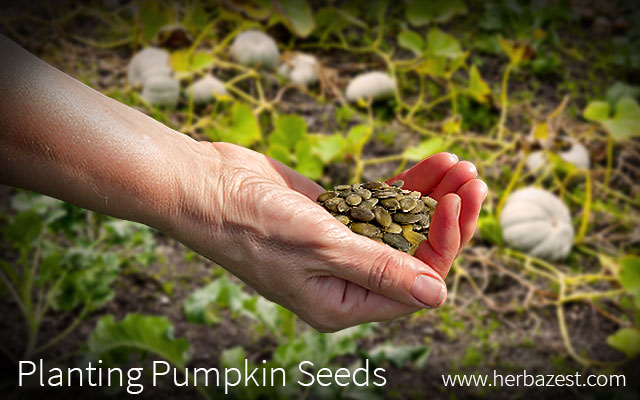Growing pumpkins from seeds can be a fun and worthwhile experience for the entire family. However, a basic understanding of how and when to plant pumpkin seeds is absolutely essential to maintaining the health, quality, and integrity of the plant. Moreover, being able to recognize the different kinds of pumpkin seeds will prove helpful when purchasing.
What You Need to Know Before Planting Pumpkin Seeds
Pumpkins of the Cucurbita pepo species are the most commonly-harvested field pumpkin. They are summer squashes with pentagonal, prickly stems. The fruit has a soft skin and produces edible seeds. Meanwhile, seeds from the Cucurbita maxima and Cucurbita moschata species will produce winter squashes. C. maxima pumpkins are known to grow large fruits of up to 300 pounds (140 kg).
Additionally, pumpkin seeds can be either organic or non-organic. Non-organic pumpkin seeds are grown by conventional farming methods, which could include the use of insecticides, fertilizers, and other chemicals. They are treated with treated with chemicals before packaging. Organic pumpkin seeds, on the other hand, do not receive the same chemical treatments prior to packaging.
Growing pumpkins from seeds can be accomplished both indoors and outdoors by taking into account the following considerations.
Planting Pumpkin Seeds Outdoors
- It is ideal to plant the pumpkin seeds in loose, well-drained soil with high levels of organic content and a pH level of 5.8 - 6.8.
- Seeds should be planted in neat rows of one to two inches (2.5 - 5.0 cm) mounds, so as to allow the surrounding soil to be more easily warmed by the sun. Use about four or five seeds per mound.
- Since pumpkin seeds will not germinate in cold soil, they usually thrive in direct sunlight, and should be planted in late spring, when there is no longer a threat of frost. Soil should be at least 65F (20C).
- Plastic tunnels and fabric covers can help to protect the seedlings from the cold air, but should be removed once the seeds germinate, or when temperatures rise to 90F (32C).
- Though different kinds of pumpkin seeds have different space requirements, planting them about four to six feet (120 - 180 cm) apart is generally advisable.
- There are generally about 7 - 14 days to germination.
Planting Pumpkin Seeds Indoors
- Planting pumpkin seeds indoors may be preferable if growing a long-season variety in an area that is known for early frosts or relatively short summers.
- Begin planting pumpkin seeds at least three to four weeks before germination.
- Plant in small pots of two to three inches (5 - 8 cm). Incorporate three to four seeds per pot, and place the pots near a window, either in the sun or beneath some other source of direct light, such as a lightbulb.
- The sowing part is the same as in the outdoors technique, except the process may be enhanced by placing the pots on heating pads to maintain the warmth of the seeds.
- The soil should to be kept well-moisturized using a spray bottle or watering can.
- When the seedlings begin to flower, and only after all danger of frost has passed, they can be transplanted to the outside garden.
A lesson in patience and care, pumpkin seed planting is the crucial first step in growing healthy, delicious pumpkin plants. Read a complete growing pumpkin guide.
Sources
- Colorado State University, Spring is the Time to Plant Pumpkins
- Cornell University, Growing Guide, Pumpkins
- Missouri Botanical Garden, Gardening Help FAQs, Horticulture Questions and Answers
- Utah State University, Extension Office, Pumpkins in the Garden




